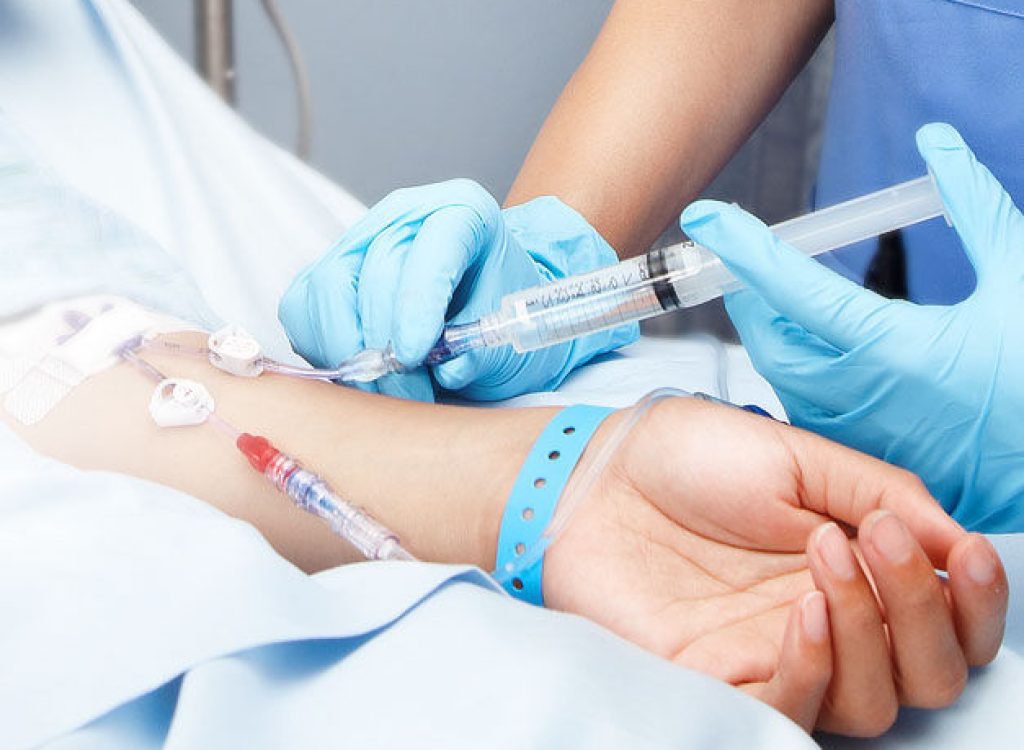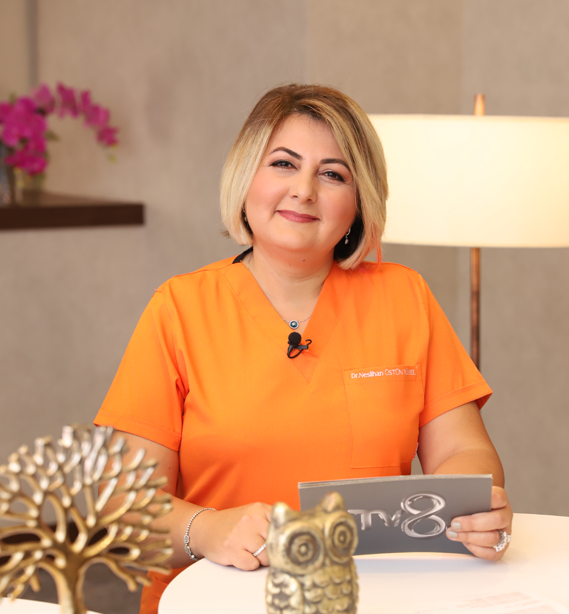Intravenous Applications

Intravenous injection (IV Treatment), which is among the intravenous applications, should be performed by experienced healthcare professionals or nurses who are experts in the field, in order to administer drugs more effectively. The main purpose of the application is to ensure that the cells can reach the antioxidant substances, minerals and vitamins they need in order to perform their functions in a much healthier way, quickly and sufficiently.
No matter how much we pay attention to healthy nutrition, various metabolic problems and diseases can prevent cells from reaching the nutrients they need. In addition, it is an indisputable fact that the nutritional values of the foods we consume today have decreased to a great extent. All these conditions cause chronic damage at the cell level, paving the way for various diseases and reducing our quality of life.
Since antioxidants, vitamins and minerals are administered directly into the vein in intravenous administration; mega-doses that cannot be administered orally can be administered without the possibility of any side effects and are much more easily accessible for the cells. Antalya intravenous applications have recently become a very important alternative support for people of all groups and all ages, from people who have adopted a healthy and fit lifestyle, to patients who seek support for their medical treatments, from people who regularly do performance sports, to businessmen who work at an intense and stressful pace.
Why Are Intravenous Applications Made?
Intravenous administration is very suitable for patients whose chronic conditions make it difficult, impossible or uncomfortable to take oral medication. It provides quicker hydration for people who have just come out of surgery and have lost a significant amount of fluid. Intravenous administration is also a good alternative for people who do not respond to oral medications. Antalya intravenous applications are applied by injecting a needle attached to a small tube directly into one of the patient's veins. This tube is connected to an IV bag to drink the prescribed medicine.
After being applied to your arm, the solution slowly drips into your bloodstream. The risks of your intravenous administration may vary depending on the drug you take. The application process is routine.
The main usage areas of intravenous applications are as follows:
- • Making the immune system stronger
- • Dermocosmetic process support
- • Treating psoriasis
- • Treating psoriasis
- • Post-operative hydration
- • Opioid and alcohol addiction
- • Making fat burning faster
- • Support before and after sports
- • Chronic fatigue syndrome
- • Preventing hair loss
- • Insulin resistance
- • Performance enhancement
- • Toxic metal detox
- • Toxic metal detox
- • Highly sterile lifestyle
- • Brain functions support.
With this practice, which eliminates the patient's complaints in a short time, the drugs pass into the blood circulation system. The drug acts by reaching the cells and tissues in the body directly. Intravenous applications, which are a very reliable treatment method, are performed according to drip calculation.
How Are Intravenous Practices Made?
Intravenous Practices are done as follows:
- • A medicine tray containing 10% antiseptic medicine, 70% ethyl alcohol, treatment tarp, cotton pads, medicine and medicine card is prepared. It is extremely important to have everything needed on this tray ready.
- • The medicine is prepared by professional nurses according to the correct measurements.
- • Before the drug is given, it should be investigated whether the drugs to be used by the doctor have any allergic effects, edema formation or dialysis fistula.
- • A tourniquet is attached to the upper part of the arm, about 15 cm, to make the veins in the arm more clearly visible.
- • In order to better feel the functioning of the vein in the tissue, it should be palpated, that is, by touching it with the hand. After determining the vein to be applied, the area is cleaned from top to bottom with the help of cotton and antiseptic solution.
- • The person to be injected should be seated in a suitable place in order to be calm.
- • The sterile cap on the needle is removed. Vein access is made 1 cm below the vein at an angle of 30 degrees or 40 degrees. As the needle is advanced through the vein, it is brought to a 15-degree angle. If this application is made with an injector, some blood is drawn from the arm and it is determined whether the needle tip is in the vein.
- • If there is no blood at the needle entry site, the needle is withdrawn and the tourniquet is opened. For the drug to be administered, some blood must come from the vein. The needle tip must be changed to enter another vein. The drug is given to the body with the help of a branule or a needle.
- • The tourniquet is opened so that the drug can spread to the circulatory system.
- • In this application, the number of drops is determined at different rates according to different drugs.
- • During the application, the needle is not in the vein, the plaster (adhesive bandage used in the dressing), the number of drops per minute should be checked frequently.
- • After the drug to be given is finished, it is removed from the vein with the help of a branule or a needle. The place where the needle entered is pressed with cotton to stop the blood flow.
Considerations While Performing Intravenous Applications
There are some conditions that should be considered when performing intravenous applications. These are as follows:
- • Conditions that may occur during intravenous administration should be monitored.
- • The drug should be carefully prepared by the nurse.
- • The part to be applied with the surgical aseptic method should be cleaned in detail and the possibility of infection should be eliminated.
- • The person in charge of the application should use gloves for hygiene and wash their hands.
- • The patient should be informed about the procedure to be applied and the reactions that may occur.
- • The drug should be given from the arm that is used less frequently.
- • Selection of the vessel where the needle insertion will be made should be done from distal to proximal, that is, from a distance to the center.
- • Application should not be made from the side that has mastectomy (removal of tissue) or arterio-venous (connection between artery and vein).
Would you like to meet our team?
Contact us for all your questions, opinions, suggestions and complaints





